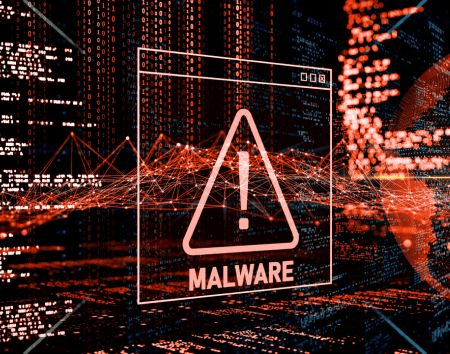
What Is Phishing? | The Complete Perth Business Guide
What Is Phishing? | The Complete Perth Business Guide
In our increasingly connected world, cyber threats are evolving fast. Among them, phishing remains one of the most pervasive and dangerous attacks facing both individuals and businesses. But what exactly is phishing — and how can your business protect itself?
In this guide, we explain phishing in simple terms, cover its various forms, show how it works, explore real-world examples, highlight the risks, and share proven strategies to recognize, prevent, and respond to phishing attacks.
What Is Phishing?
Phishing is a type of social engineering attack in which malicious actors attempt to trick individuals into revealing sensitive information — such as usernames, passwords, credit card details, or personal data — or into installing malware. Wikipedia+2The LastPass Blog+2
Attackers pose as trustworthy entities (e.g. banks, government agencies, service providers) to gain the target’s trust, then lure them into clicking a link or opening an attachment that leads to credential theft or system compromise.
The name “phishing” borrows from “fishing” — casting a lure and waiting for someone to bite.
Why Phishing Matters for Small Businesses
Phishing is a top threat for small businesses for several reasons:
-
Everyone is a target: Even small operations handle sensitive data (customer details, financials, employee information). A successful phishing breach can expose all of that.
-
Low cost, high impact: Launching a phishing campaign is cheap; the payoff from harvesting credentials, conducting fraud, or gaining a foothold in a business network can be substantial.
-
Insider risk: Even well-meaning employees might click on a phishing link if it appears legitimate.
-
Reputation & trust: A breach can erode client trust, leading to lost business, regulatory fines, and permanent damage to brand reputation.
Given limited budgets, small businesses often lack sophisticated security teams — making phishing awareness and basic protections vital.
Common Types of Phishing Attacks
Phishing attacks come in several flavors. Recognizing the variants helps you defend better.
| Phishing Type | Description | Common Traits / Example |
|---|---|---|
| Email Phishing (Bulk) | Mass emails sent to many recipients, often per‐known templates, hoping some users click. | An email claiming “Your bank account is locked — click here to verify.” |
| Spear Phishing | Targeted attacks aimed at a specific individual or organization. Attackers gather intelligence to craft a believable message. | An email addressed to a CFO using internal jargon asking to approve a payment. |
| Clone Phishing | The attacker takes a legitimate email, clones it, and replaces or alters a link or attachment with malicious content. | A resend of your invoice email but with a “new copy” attachment containing malware. |
| Vishing (Voice Phishing) | The attacker makes fraudulent phone calls, impersonating a trusted party. | A person calling your office IT team to “verify credentials” or “reset a password.” |
| Smishing (SMS Phishing) | Phishing via text messages. | A text claiming your delivery is delayed and asking you to click a link to “reschedule.” |
| Search Engine Phishing / SEO Poisoning | Attackers exploit SEO techniques to make phishing sites rank in search results. | A user searches for “free antivirus download,” clicks a top result, and is taken to a fake site that steals credentials. Bitdefender+4The LastPass Blog+4MalCare+4 |
How Phishing Works: Step by Step
Let’s walk through a typical phishing attack:
-
Reconnaissance / Targeting
The attacker researches the target — perhaps scouring LinkedIn, company websites, or social media to learn names, roles, or relationships. -
Crafting the Lure
Using the gathered info, the attacker disguises their message as legitimate — for example, from a known vendor or internal department. -
Delivery
The message is delivered — via email, SMS, phone call, or by manipulating search results (SEO poisoning). -
Hooking the Victim
The user clicks a link or downloads an attachment. The link may lead to a fake login page, or the attachment may carry malware. -
Harvest & Exploit
Once credentials are entered or malware runs, the attacker gains access — either to the user’s account, internal systems, or data. -
Pivot & Expand
From the initial breach, the attacker may move laterally within your network, escalate privileges, or carry out further fraud or data exfiltration.
Many phishing kits and tooling now automate much of this process, making attacks easier for less sophisticated criminals.
Real-World Examples & Case Studies
-
In 2024, several phishing campaigns used SEO poisoning to make malicious links appear in top search results. Victims clicking them were led to credential-stealing pages. netcraft.com+2Bitdefender+2
-
A common tactic: attackers clone invoice or payment request emails from real vendors, then send a “corrected invoice” or “resend” message embedding infected attachments.
-
Vishing is growing, with fraudsters impersonating bank staff or service providers to trick businesses into giving up remote access or confirming phishing codes.
Signs of a Phishing Attempt
Phishing emails or messages often include subtle (or overt) red flags. Be alert to:
- Generic greetings (“Dear Customer”) instead of personal names
- Urgent or threatening language (“Your account will be closed”)
- Mismatched email domains (e.g. “support@yourbank-secure.com”)
- Hovering over links shows a URL different from the displayed text
- Poor grammar, spelling mistakes, odd formatting
- Unexpected attachments, especially ZIP or Office files with macros
- Requests for credentials, payment, or private data
- Strange sender addresses or lookalike domains (typosquatting)
- In search: a top result that looks off or uses “.xyz”, odd domain structures, or unfamiliar site design
When in doubt, verify directly — don’t click.
Why Small Businesses Are Especially Vulnerable
- Limited security awareness training and resources
- Lean IT teams juggling many priorities
- Fewer security tools (e.g. advanced filtering, behavior analytics)
- Attackers often target supply chains; a small vendor is a weak link
- Smaller budget for incident response and cyber recovery
How to Protect Your Business from Phishing
1. Educate & Train Your Team
Conduct regular phishing simulation tests and awareness training. Show employees real examples, and teach them how to identify suspicious messages.
2. Use Email Security Tools
- Spam filters, anti-phishing toolkits
- DMARC, DKIM, and SPF email authentication
- URL and attachment scanning (sandboxing)
3. Enforce Multi-Factor Authentication (MFA)
Even if credentials are stolen, MFA adds a critical layer of defense.
4. Implement Least Privilege & Segmentation
Limit access rights. If an attacker compromises one account, they shouldn’t be able to roam freely.
5. Keep Systems & Software Updated
Patch operating systems, browsers, plugins, and security platforms to close known vulnerabilities.
6. Use Anti-Malware & Endpoint Protection
Ensure you have real-time protection, behavioral analysis, and rollback capabilities.
7. Verify Requests & Process Checks
Institute processes for verifying financial or credential requests. Use independent channels (e.g. call back) for confirmation.
8. Monitor & Respond Quickly
Detect anomalies (failed logins, odd access patterns). Have an incident response plan for suspected phishing.
What to Do If You Suspect a Phishing Attack
- Don’t click any more links or open attachments.
- Disconnect affected devices from the network.
- Change passwords (starting with high-risk accounts).
- Enable MFA on all accounts (if not already).
- Review logs for suspicious activity.
- Notify affected parties or regulators if data is exposed.
- Educate the staff: analyze how the attack worked and prevent future ones.
Final Thoughts
Phishing remains one of the most potent threats to businesses of all sizes — particularly smaller organizations with fewer defenses. But with knowledge, vigilance, and layered safeguards, you can dramatically reduce the risk.
At BIZ-LYNX Technology, we help businesses strengthen their security posture against phishing, social engineering, and other cyber risks. Need help auditing your defenses, training your team, or deploying protective tools? Let’s talk.







